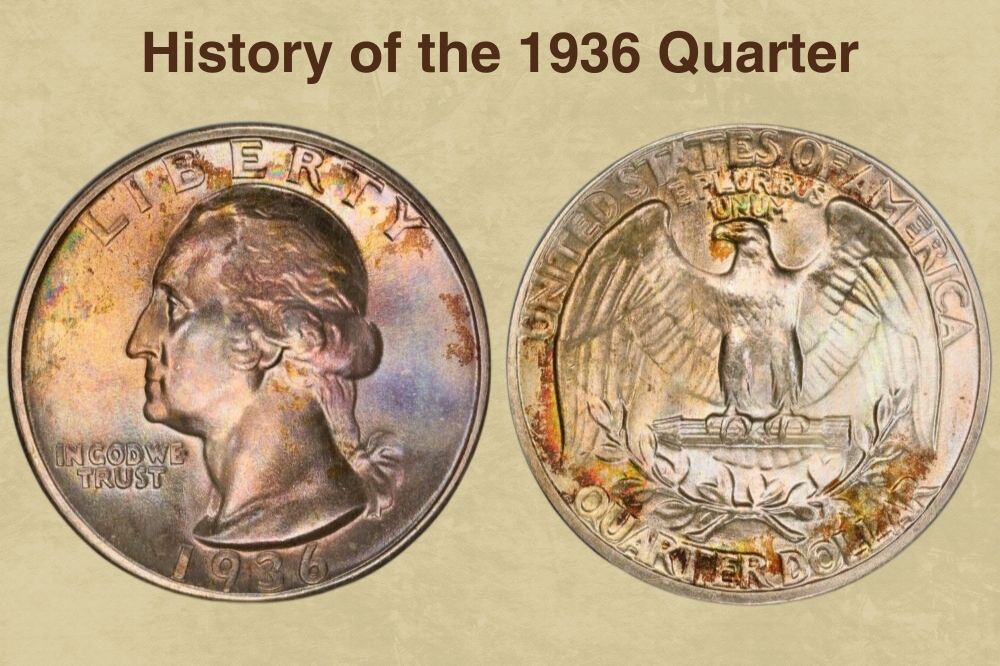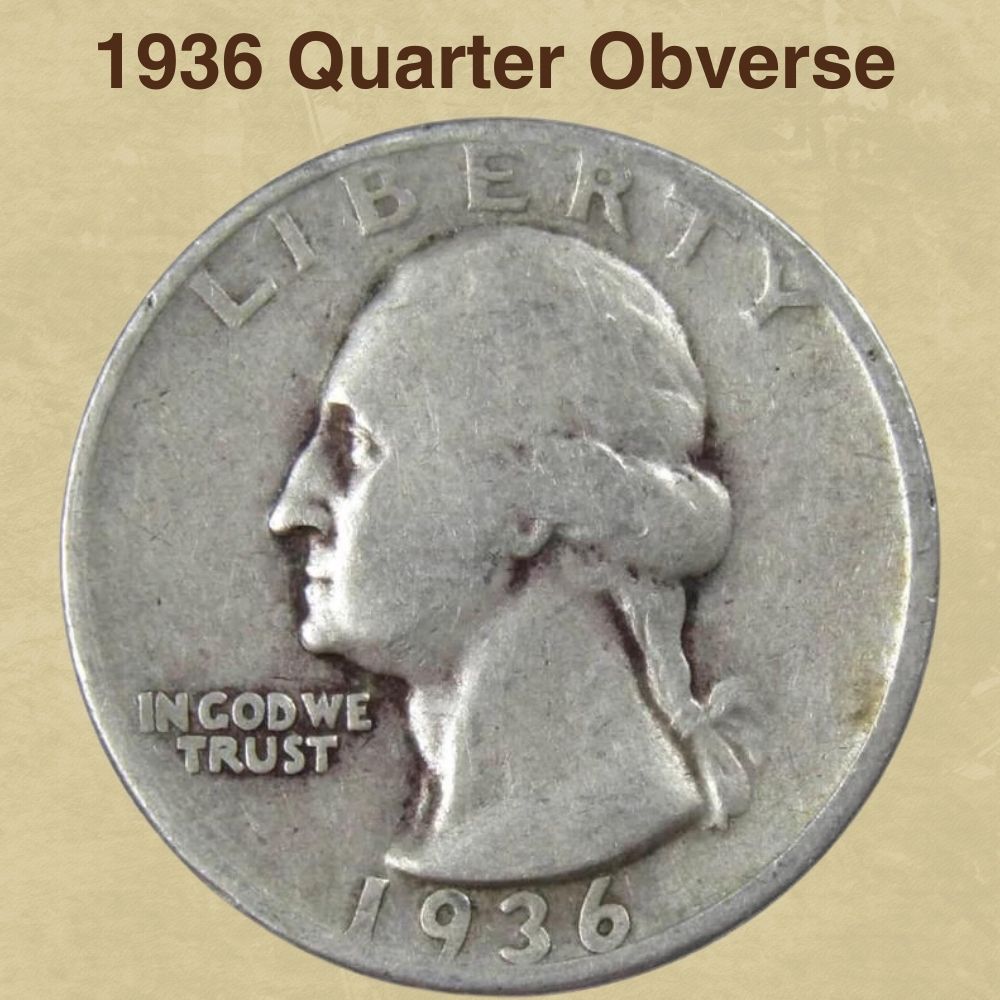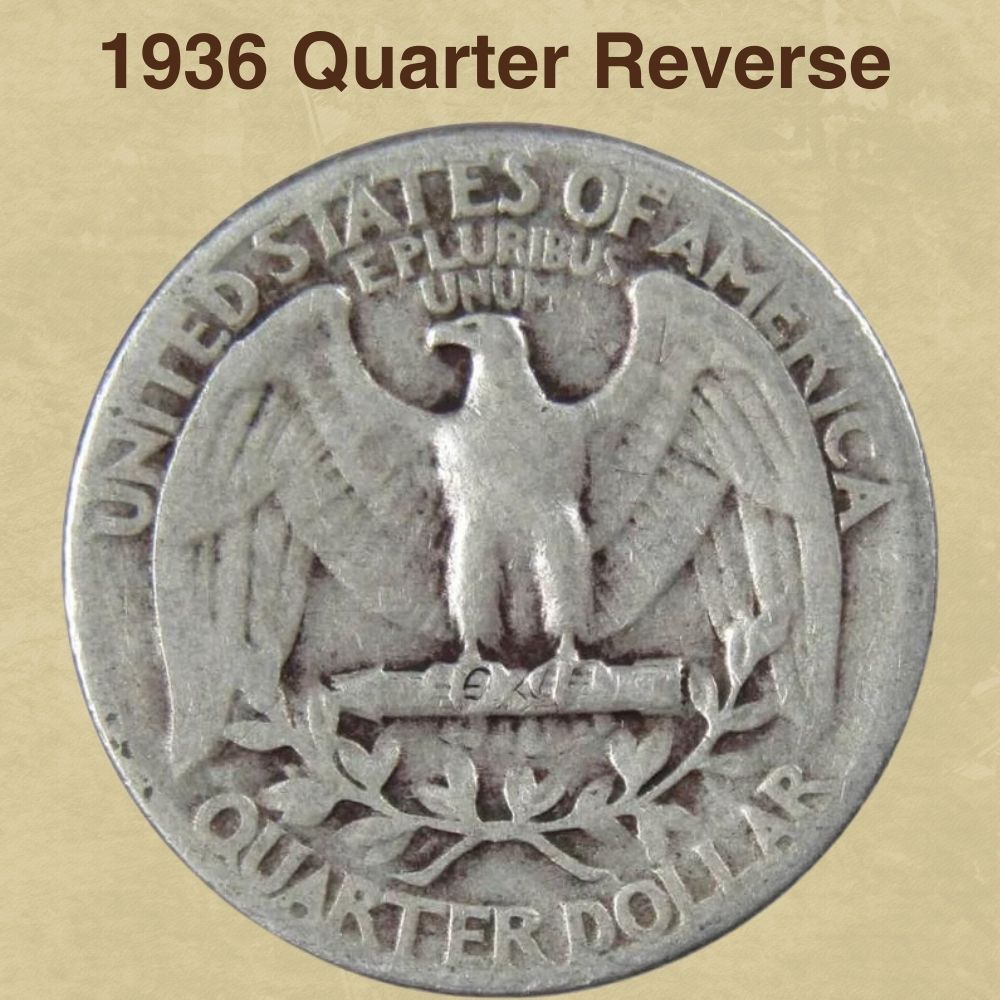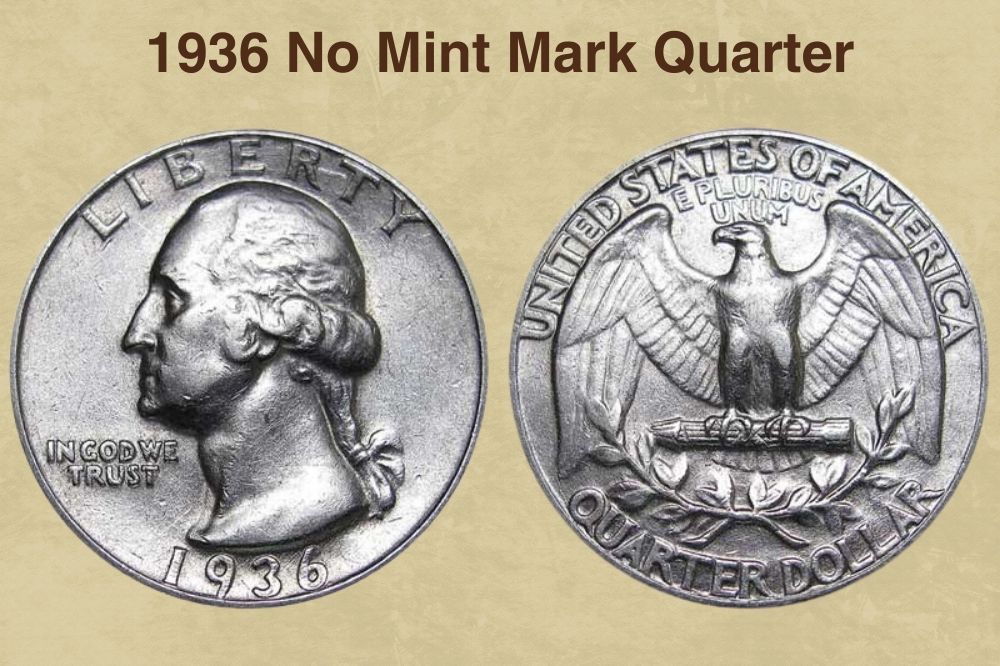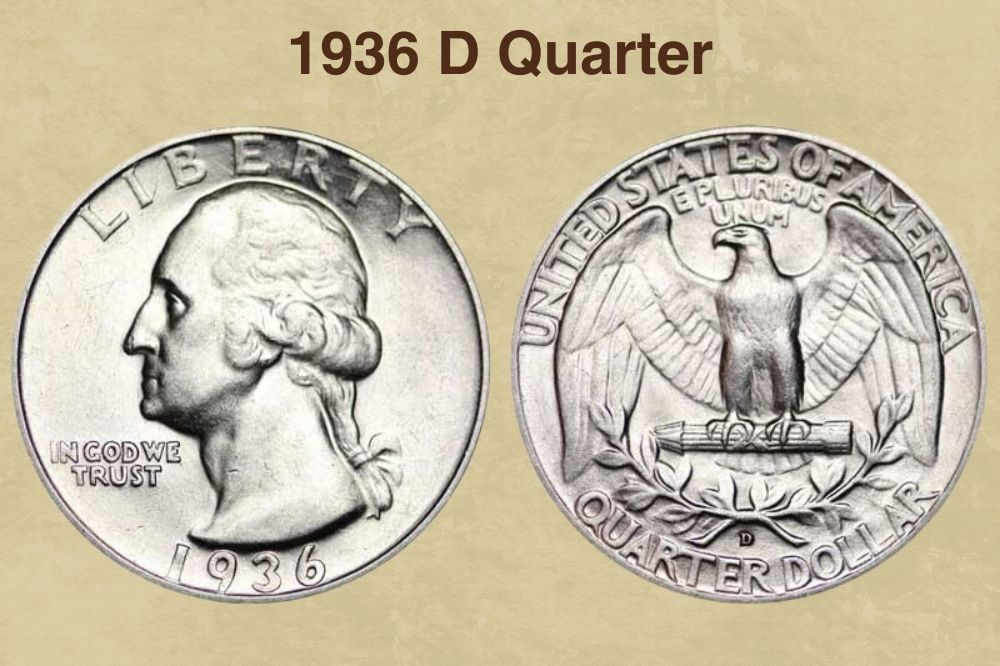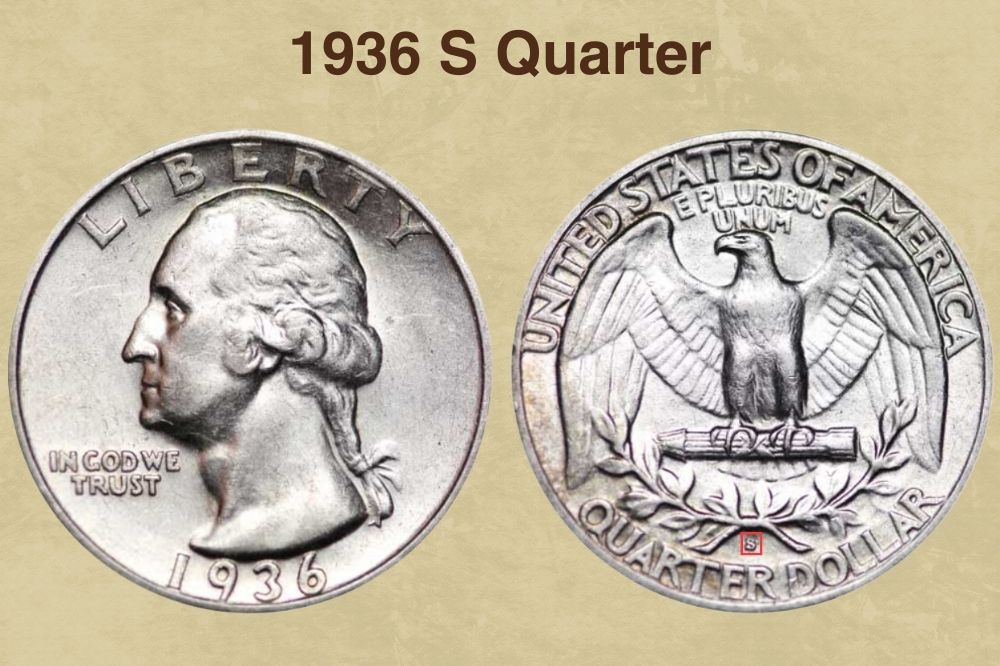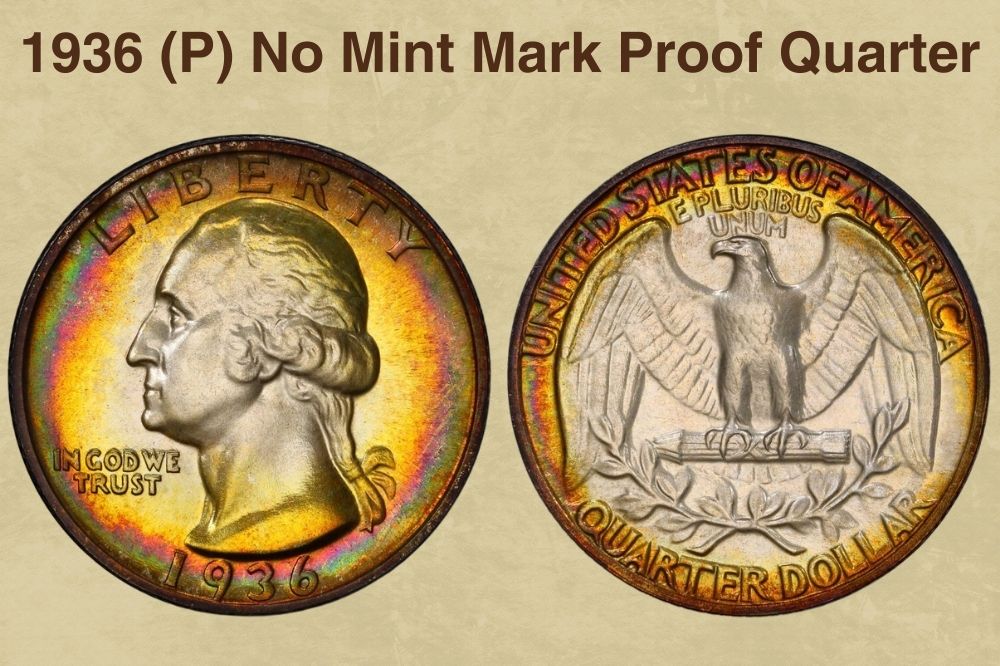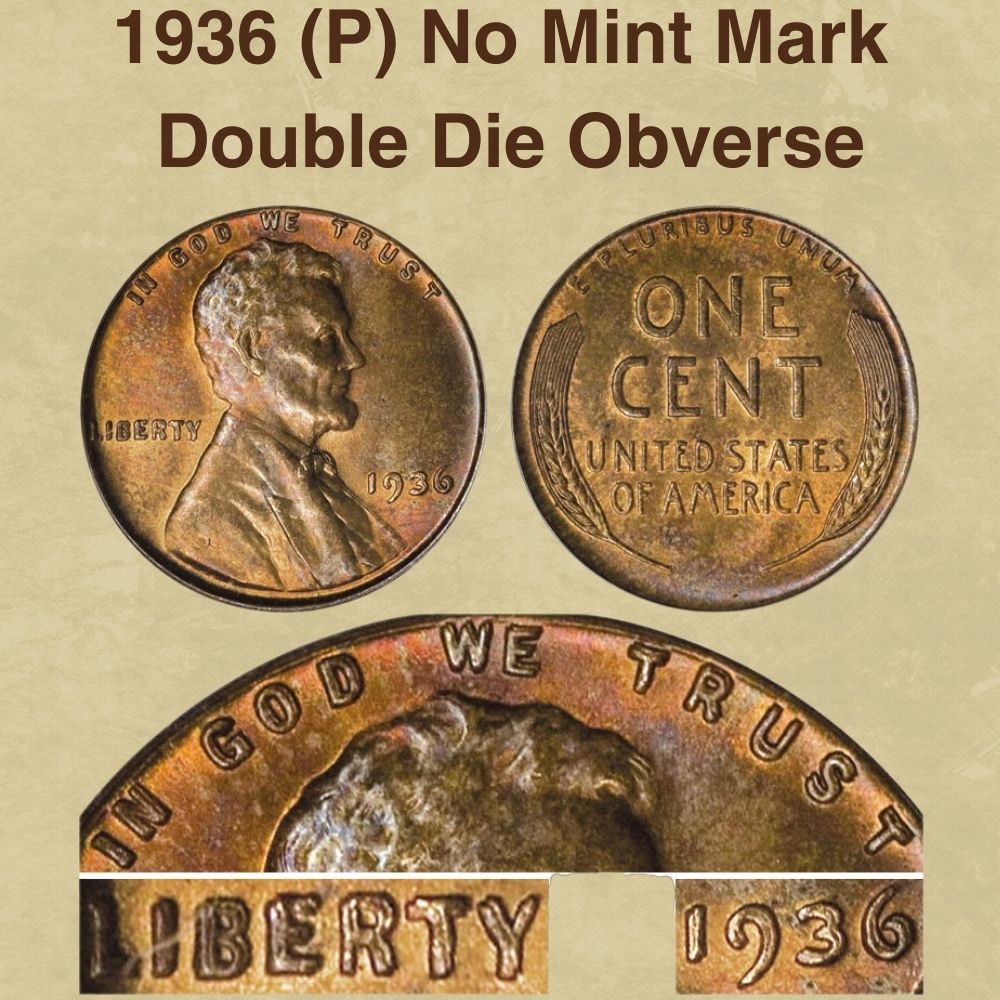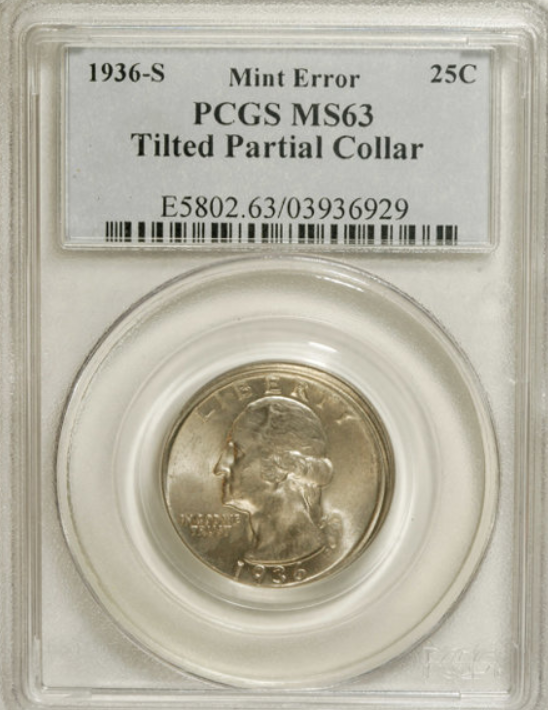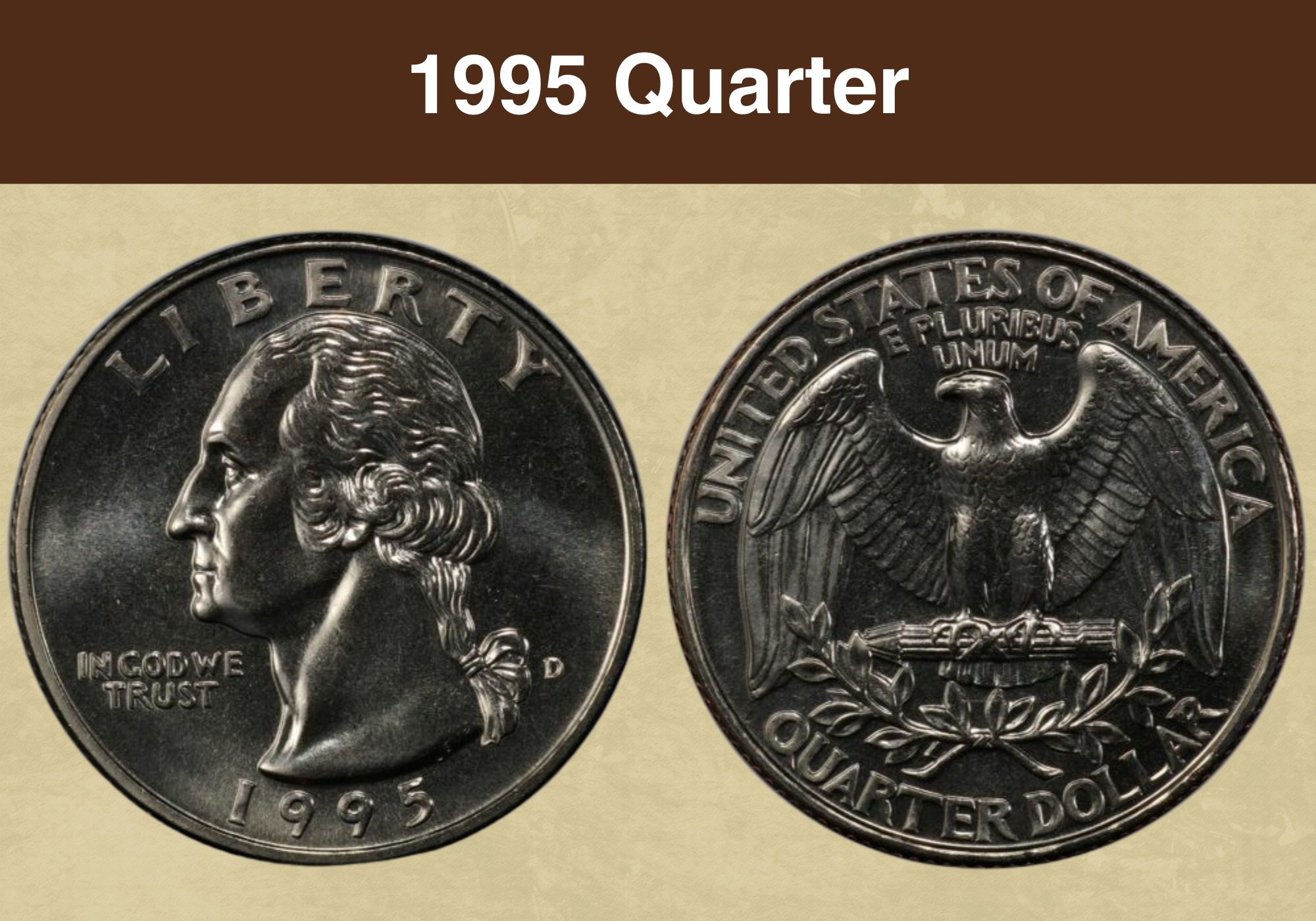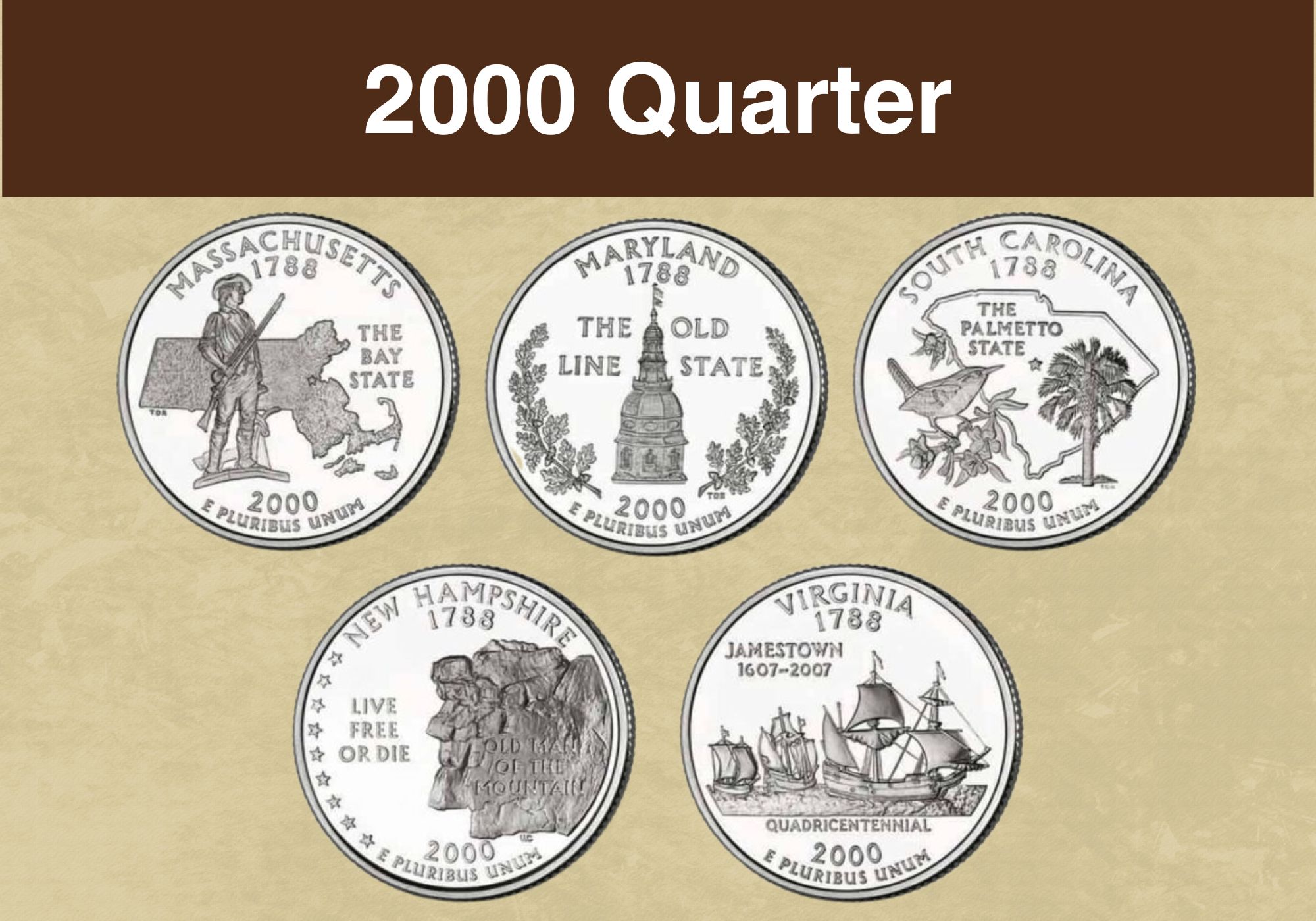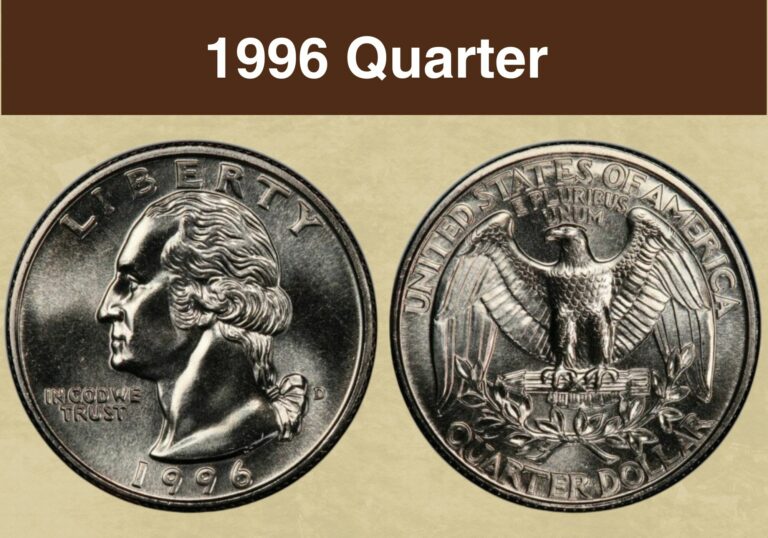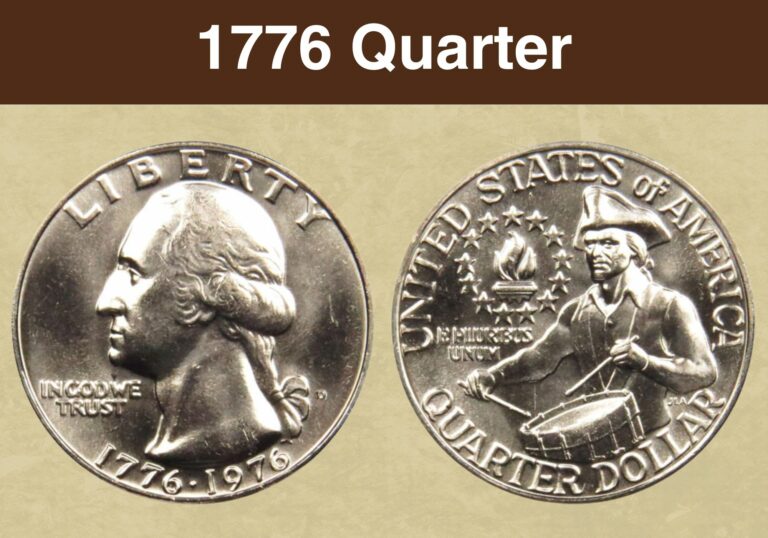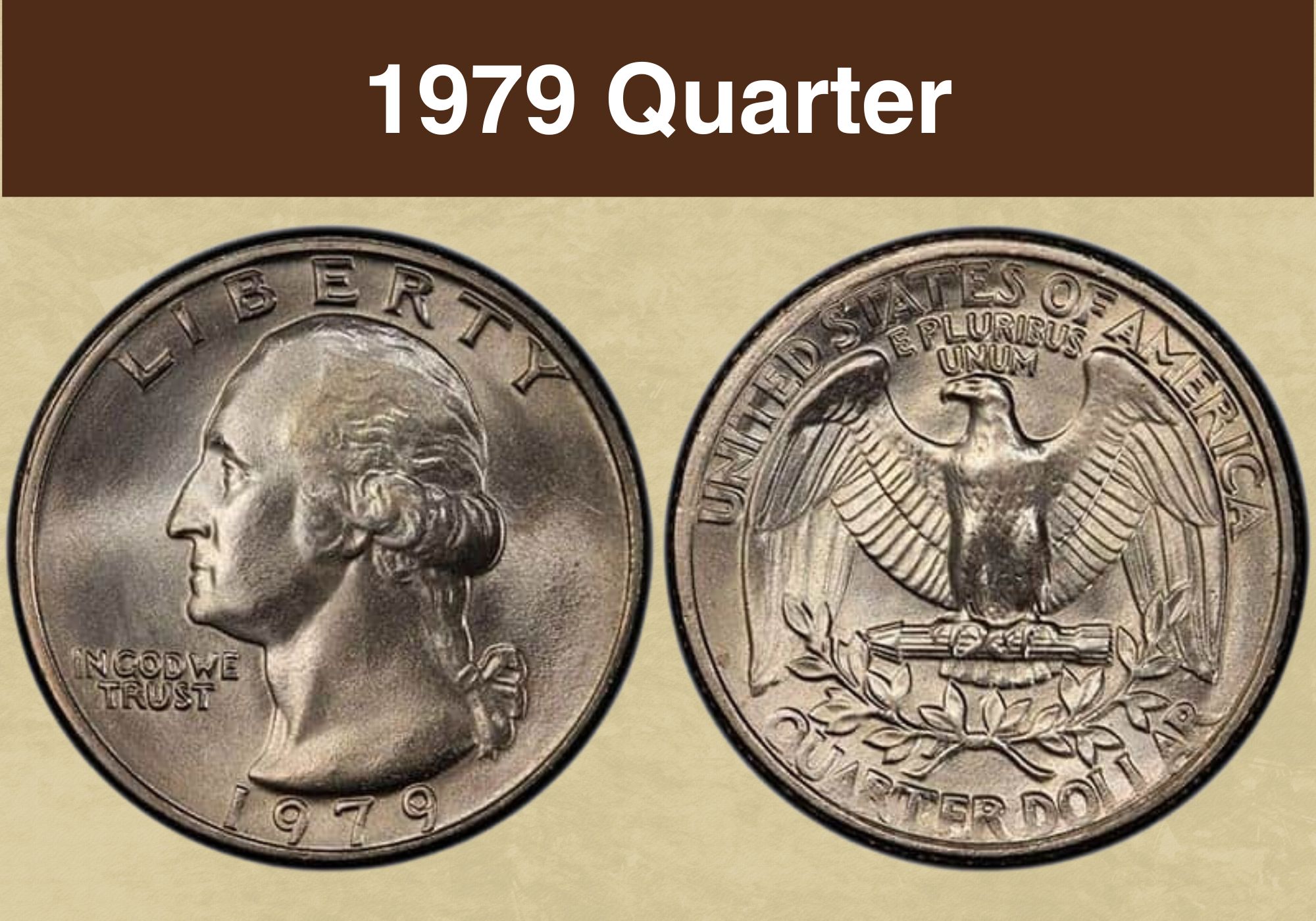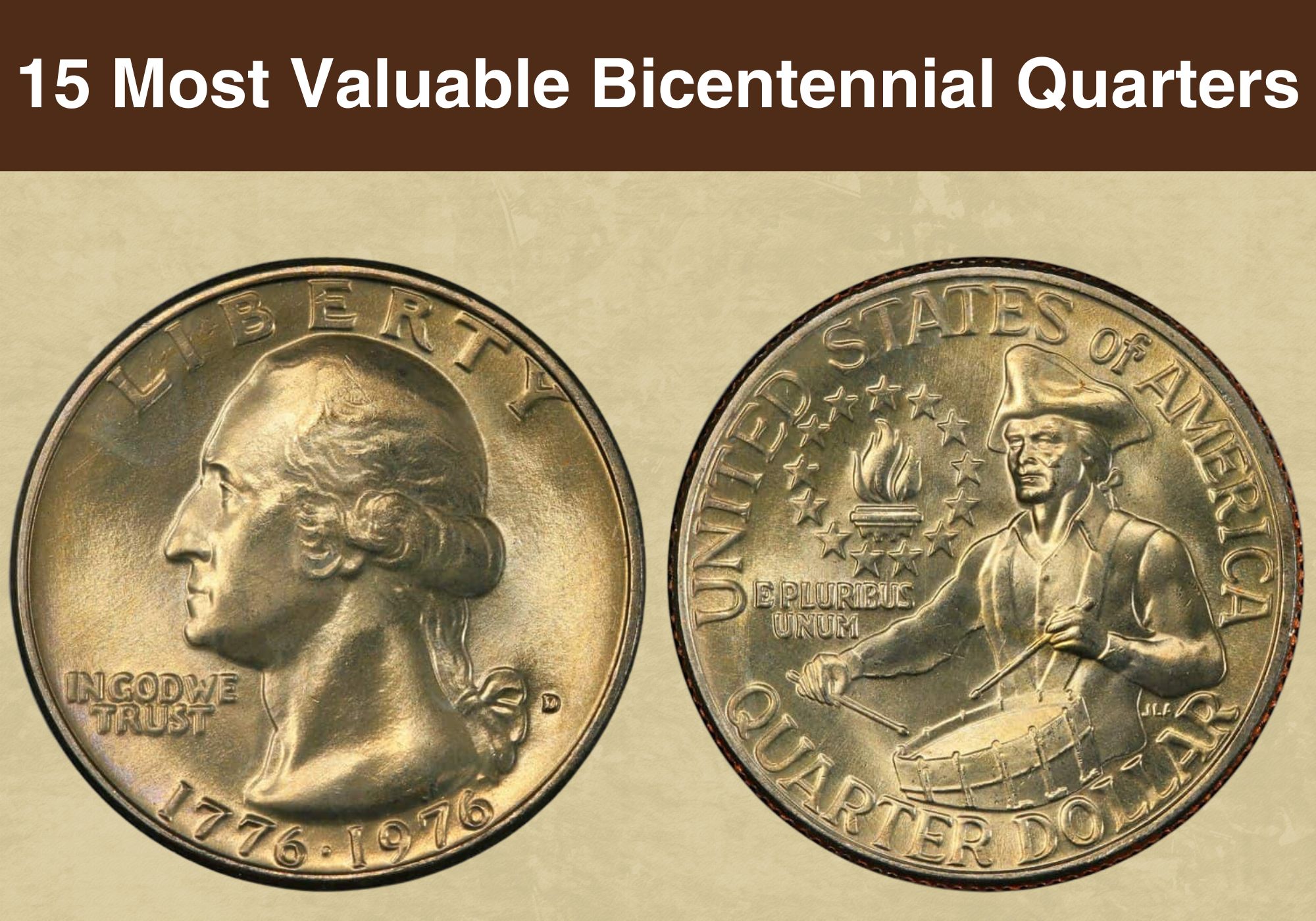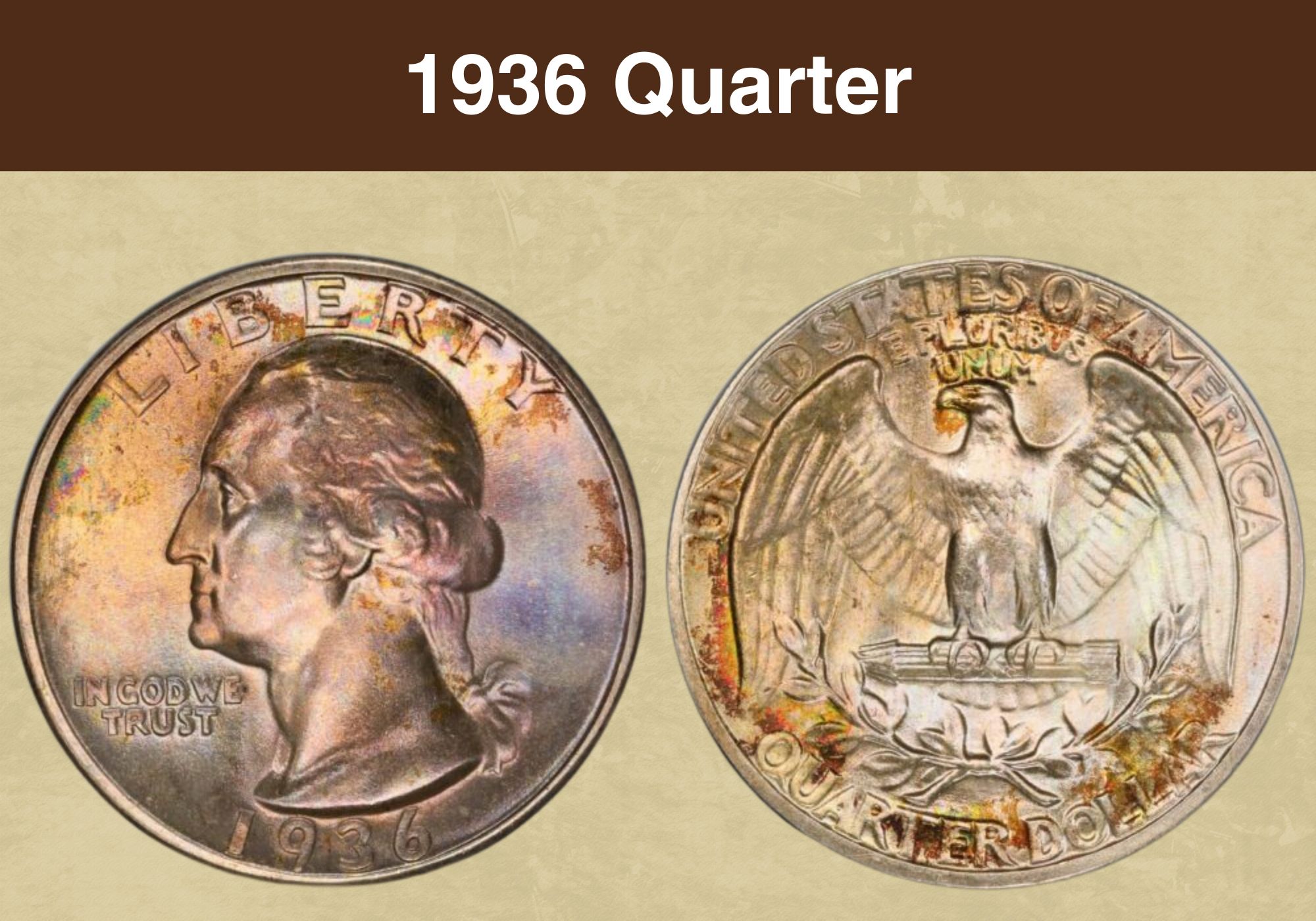
Coin Value Contents Table
- 1936 Quarter Value Chart
- History of the 1936 Quarter
- Features of the 1936 Quarter
- 1936 Quarter Grading Guides
- 1936 Quarter Value Guides
- 1936 No Mint Mark Quarter Value
- 1936 D Quarter Value
- 1936 S Quarter Value
- 1936 (P) No Mint Mark Proof Value
- Rare 1936 Quarter Errors List
- Where to Sell Your 1936 Quarter ?
- FAQs
1936 marked the fifth mintage of the coins known as Washington quarters. And if you have an interesting example, it might just be worth a lot of money.
But coin values vary hugely. So what makes the difference between a run-of-the-mill example and one that will get a collector hot under the collar?
That’s what we’re here to find out! We’re going to investigate the 1936 quarter value and the different factors that affect it. And we’ll take a look at the design and history of the Washington quarter along the way.
Ready to learn more? Then step this way!
1936 Quarter Value Chart |
||||
| Mint mark | XF45 | MS60 | MS65 | MS67 |
| 1936 No Mint Mark Quarter Value | $9 | $32 | $90 | $400 |
| 1936 D Quarter Value | $140 | $625 | $1,150 | $4,150 |
| 1936 S Quarter Value | $27 | $100 | $265 | $1,100 |
| PR45 | PR60 | PR65 | PR67 | |
| 1936 No Mint Mark Proof Quarter Value | $225 | $525 | $1,000 | $7,500 |
History of the 1936 Quarter
The 1936 quarter is part of the series known as Washington quarters. Their nickname comes from the image on the obverse, a portrait of the first US president, George Washington.
It had originally been planned to mark the bicentenary of Washington’s birth with a single-year issue of a coin. And at first, this was intended to be a half-dollar.
But plans changed, and it was decided that the new coin should be a permanent addition to the nation’s coinage. And rather than a half-dollar, it would be a quarter.
The Treasury ran a competition to select a design for the new coins. The winning entry was by an artist named John Flanagan.
The first coins were struck in 1932, and they were made of 90 per cent silver and 10 per cent copper. But over the decades, silver values steadily rose, making the coins increasingly expensive to produce.
From 1965 onwards, silver was removed from the quarter. The new coins were made of copper with a cupronickel cladding to give them a silver color. It’s that recipe that’s still being used for quarters to this day.
The new quarters were tougher than the silver versions, so some changes were needed to the design. The relief was lowered to ensure that it would still be possible to strike them successfully.
In 1936, quarters were struck at the Mint facilities in Philadelphia, Denver and San Francisco. And proof coins were struck at Philadelphia too.
There are several mintages of silver Washington quarters where it’s difficult to find high quality examples. Amongst them is the 1936 D. It’s this rarity that keeps the values for these coins buoyant.
Also read: Top 13 Most Valuable State Quarters Worth Money
Features of the 1936 Quarter
The Obverse of the 1936 Quarter
The obverse – or “heads” side – of the 1936 quarter is responsible for its nickname. It shows the profile of George Washington, facing to the left as the coin is viewed.
The decision on a design for the commemorative Washington coin had first been passed to a committee. They were charged with overseeing all aspects of the celebrations for the bicentenary of Washington’s birth.
But it was then decided that Washington should be honored with a permanent coin. And as such, the decision on its design passed to the Treasury Secretary, Andrew W. Mellon.
The committee wrote to Mellon recommending the image they had already selected – a portrait by the American artist, Laura Gardin Fraser. But Mellon preferred a different option, by John Flanagan.
By the time the coin was ready to be issued, Mellon had left his post. The committee tried to persuade his successor, Ogden L. Mills, to think again. Mills, however, declined, and the coins went ahead with Flanagan’s portrait.
His initials are inscribed on the cut-off of the bust. The word “LIBERTY” arches across the top of the coin, while the date mirrors it at the bottom. The familiar motto “IN GOD WE TRUST” is tucked to the left of the design, just under Washington’s chin.
The Reverse of the 1936 Quarter
The reverse of the 1936 quarter was also designed by John Flanagan. It depicts a heraldic eagle with outstretched wings, perched on a bundle of arrows. Beneath it is an olive branch.
The stylized representation of the eagle gave rise to some comment when the coin was issued. The New York Times even sought the view of an ornithologist to determine its species. The verdict was that the bird was a bald eagle, the traditional emblem of the USA.
Above its head is the Latin motto “E PLURIBUS UNUM”. The phrase, which appears on most US coins, means “From the many, one”. It’s a reference to the country’s birth as a union of states.
The words “UNITED STATES OF AMERICA” curve across the top of the coin. And at the bottom is the denomination, spelled out as “QUARTER DOLLAR”.
The 1936 quarters struck in Denver and San Francisco both have mint marks – a “D” and an “S” respectively. Look for the mark below the middle of the olive branch. If there’s no letter, your coin was struck in Philadelphia.
Other Features of the 1936 Quarter
Because the 1936 quarter is made mostly of silver, all coins have an intrinsic value. They weigh 6.3 grams and are 24.3 millimeters in diameter.
If you turn one on its side, you’ll see what’s known as a “reeded edge”. The reeds are grooves which run at right angles to the coin faces.
They were first used in the eighteenth century, and were originally designed as a measure to counter fraud. The pattern meant it was easy to see at once if someone had clipped precious metal from the edge of the coin.
If you compare a quarter from 1936 with one from a decade later, you’ll see some minor differences. The dies were changed in 1944 to make the lettering sharper, and the date was slightly enlarged the same year.
This YouTube video from Big D Coins looks in detail at examples of 1934, 1935, and 1936 quarters.
1936 Quarter Grading Guides
| # | Grade |
|---|---|
| 1 | Basal State-1 |
| 2 | Fair |
| 3 | Very Fair |
| 4, 5, 6 | Good |
| 7, 8, 10 | Very Good |
| 12, 15 | Fine |
| 20, 30 | Very Fine |
| 40 | Extremely Fine |
| 50 | About Uncirculated |
| 60 | Mint State |
| 65 | Mint State |
| 70 | Mint State |
Please check our grading guides to know your coin scale, It’s the necessary step to know the exact value of your coin.
Check out now: How to Grade Washington Quarter?
1936 Quarter Value Guides
1936 No Mint Mark Quarter Value
The Philadelphia Mint facility struck 41.3 million quarters in 1936. Today, the independent coin grading agency, the PCGS, estimates that around one in ten of those survive at all grades.
The key to the value of an individual coin is its condition. Coin condition is assessed on a scale from 1 to 70. Coins graded 1 are in poor condition, with only enough detail visible to make out the denomination and mintage. At the other end of the scale, coins graded 70 are flawless.
Of the 1.4 million or so surviving 1936 no mint mark quarters, around 40,000 are thought to be graded 60 or better. That means they’re uncirculated – or in coin collecting lingo, in “mint state”.
A circulated example of the mintage graded XF45 (“extremely fine”) is worth around $9. But for a mint state 1936 quarter, you’ll need to part with at least $30.
Prices rise through the grades, to $42 at MS63 and $70 at MS64. A quarter graded MS65 – the lowest grade at which a coin is termed a “gem” – is worth around $90.
Values accelerate at MS67 and beyond. A quarter at that level is valued by the PCGS at $400. That value rises to $1,900 at MS67+.
And the finest example known to exist is a single quarter graded MS68. If you wanted to get your hands on this superlative coin, it would cost you around $25,000.
1936 D Quarter Value
Only 5,374,000 1936 D quarters were ever produced. Today, it’s believed that only around 27,000 survive in mint condition, with around 3,920 in gem grades. It’s for this reason that this is considered a key mintage in the Washington quarter series.
Even in the poorest condition, a coin graded 2 is worth around $12. (There’s a premium for coins graded 1, which are worth around $26.)
An example graded XF45 is valued at around $140. For a mint state quarter, you’ll be looking at a minimum of $625. And the value of a gem MS65 is around $1,150.
The finest examples to have come to light are ten coins graded MS67+. Those are valued by the PCGS at $10,000 apiece.
1936 S Quarter Value
Even fewer Washington quarters were struck in San Francisco in 1936 than in Denver. The mintage was just 3,828,000 coins.
But examples in mint state are more readily available, with around 40,000 believed to have survived to this day. And gems are thought to number around 9,700.
A coin graded 2 is worth around $9 (a point lower, and the value is around $22). A VG20 (“very good”) example is around $12, while an XF45 is around $27.
For a mint state example, values enter three figures – $100 at MS60. That rises to $265 at MS65.
And the cream of the crop are two coins graded MS68. These standout examples are valued by the PCGS at $26,500 each.
1936 (P) No Mint Mark Proof Value
1936 was the very first year in which proof versions of Washington quarters were struck. The coins were produced using highly polished planchets and specially prepared dies.
The proofs were aimed at collectors, who were able to order them either individually or as part of a set with other denominations.
Just 3,837 proof quarters were struck, making this the lowest mintage of any denomination in the 1936 proof set. Some passed into circulation, and it’s possible to find them today at grades as low as PR40.
At that level, the value is around $210. A mint state PR60 1936 proof quarter is worth around $525. And for a gem PR65, the value is around $1,000.
The award for “best in class” goes to a sole proof quarter certified by the PCGS at MS68. That’s valued at an astonishing $40,000.
Also read: Top 16 Most Valuable Modern Quarters Worth Money
Rare 1936 Quarter Errors List
1936 (P) No Mint Mark, Double Die Obverse
Sometimes, errors happen during manufacture of the die used to strike the coins. That’s the case with what are known as “double die errors”.
These happen during the process of transferring the coin design from the hub to the die. If there is any movement during that process, it will result in double lines on parts of the design. This doubling is then transferred to the coins struck by the die.
If the error is on the die used to strike the obverse design, it’s known as a “double die obverse” or DDO. If it’s on the reverse, it’s a “double die reverse” or DDR.
One of the dies used to strike the obverse of quarters at the Philadelphia Mint facility in 1936 had this error. Look for evidence of the doubling on the letters of “IN GOD WE TRUST”.
The value of the resulting coins depends on their condition.
The PCGS values a coin graded 4 at $18, while an example graded XF45 is worth around $260. Mint state examples start at $825. And the finest four coins to have been certified to date are graded MS66 and valued at $3,500 each.
You can see examples of coins with this error in this YouTube video from Treasure Town.
1936 S Quarter, Tilted Partial Collar
The collar is the piece of metal that holds the planchet in place when the coin is struck. If it’s out of position at the crucial moment, it can leave a mark around the edge of the coin.
That was the case with one 1936 quarter struck in San Francisco. It showed the line of the collar around three quarters of the coin, from just north of “IN GOD WE TRUST” to below the “3” in the date.
It was graded MS63 by the PCGS. And when it was presented at auction in 2007, it sold for over $250.
Also read: 17 Most Valuable Quarter Errors Worth Money
Where to Sell Your 1936 Quarter ?
Now that you know the value of your coins, do you know where to sell those coins online easily? Don’t worry, I’ve compiled a list of these sites, including their introduction, pros, and cons.
Check out now: Best Places To Sell Coins Online (Pros & Cons)
FAQs
What is the 1936 quarter made of?
The 1936 quarter is made of 90 per cent silver and 10 per cent copper. Modern quarters, in contrast, have a copper core with cupronickel cladding.
The easiest way to tell the difference between the two types of coin is by looking at the edge. With the cupronickel versions, you can often see signs of the copper core where the cladding has worn away.
What year quarters are silver?
Washington quarters were first issued in 1932, when they were made of 90 per cent silver. The composition remained the same right up until 1964.
But quarters from 1965 onwards only appear silver. They have a copper core, and the silver color comes from a cladding of copper and nickel.

